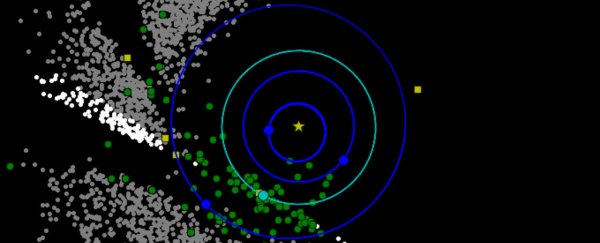To protect ourselves from asteroids and comets that could very easily smash into Earth, researchers have to first know where those objects are in our Solar System, which is exactly what NASA has been doing with its Near-Earth Object Wide-field Survey Explorer (NEOWISE) spacecraft. Now, after two years of study, we, the public, finally get a chance to take a peek at what it found.
According to NASA, NEOWISE has characterised 439 near-Earth objects (NEOs) - a catch-all term for asteroids and comets that come (relatively) close to Earth. Out of those 439, 72 were not yet known to science.
Originally, the spacecraft was called the Wide-field Infrared Survey Explorer (WISE), which was launched back in 2009 to image the sky using infrared-sensitive cameras.
In 2011, NASA deactivated WISE with the completion of its mission, but they reactivated and renamed it to NEOWISE in December 2013 to help astronomers find and track NEOs, which everyone agrees is a worthwhile pursuit if we want a heads-up on a potentially world-ending impact.
Over the past year, NEOWISE has collected over 5.1 million infrared images and measured over 19,000 asteroids. After close analysis, NASA has widdled this number down to a possible 439 NEOs, with only eight of them classified as potentially hazardous asteroids (PHAs).
"By studying the distribution of lighter- and darker-coloured material, NEOWISE data give us a better understanding of the origins of the NEOs, originating from either different parts of the main asteroid belt between Mars and Jupiter or the icier comet populations," said James Bauer, the mission's deputy principal investigator.
The spacecraft isn't alone in its quest to keep a watchful eye on NEOs, either. It's actually one piece in a large network.
As Amy Mainzer from NASA's Jet Propulsion Laboratory puts it: "NEOWISE discovers large, dark, near-Earth objects, complementing our network of ground-based telescopes operating at visible-light wavelengths. On average, these objects are many hundreds of metres across."
NEOWISE will continue searching for new and exciting NEOs. Hopefully, none will hit us in the foreseeable future because, as this video shows, the Solar System is actually a pretty crowded place. Check out how many there are below - it's actually kind of mesmerising.

